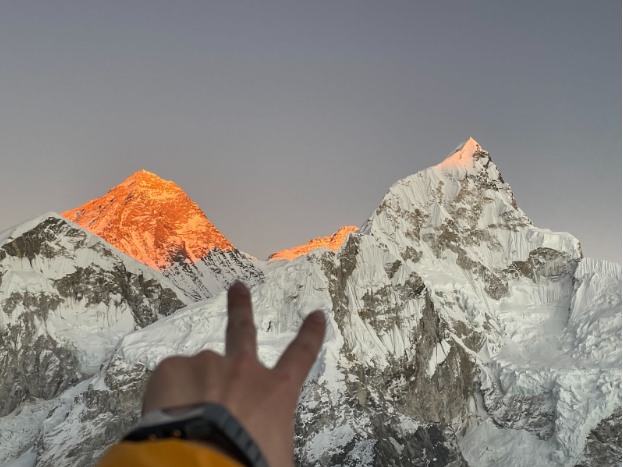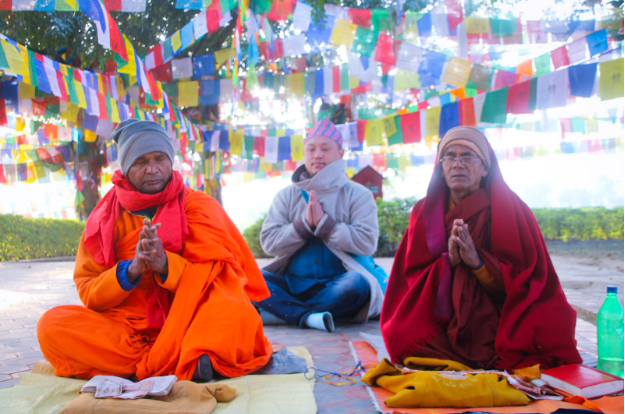Embarking on a “Nepal-Bhutan Tour” is to weave together two distinct yet complementary threads of Himalayan heritage and spiritual profundity. These neighboring nations, cradled by the world’s highest mountains, offer a fascinating juxtaposition of vibrant chaos and serene tranquility, ancient traditions and progressive philosophies. This article explores the compelling reasons to undertake such a journey, highlighting the unique experiences each country presents and the profound synergy created when they are explored together.
Nepal: The Cradle of Diversity
Nepal, a land of unparalleled topographical and cultural diversity, beckons travelers with its raw, authentic charm. Its capital, Kathmandu, is a sensory overload in the best possible way. The UNESCO World Heritage Sites of the Kathmandu Valley, including the ancient Durbar Squares of Kathmandu, Patan, and Bhaktapur, are living museums. Here, medieval palaces, intricately carved wooden temples, and bustling courtyards narrate tales of dynasties and devotion. Observing the rhythmic chaos of daily life, the ubiquitous prayer flags fluttering in the breeze, and the captivating artistry etched into every corner provides an immediate immersion into Nepalese culture.
Beyond the historical heart, Nepal is a paradise for adventurers. Pokhara, a serene lakeside city with the majestic Annapurna range as its backdrop, offers myriad outdoor activities. From exhilarating paragliding flights that provide bird’s-eye views of the valley to peaceful boat rides on Phewa Lake reflecting the snow-capped peaks, Pokhara caters to both adrenaline junkies and those seeking solace. For wildlife enthusiasts, Chitwan National Park in the southern lowlands is a crucial stop. Home to the endangered one-horned rhinoceros, various species of deer, sloth bears, and elusive tigers, a jungle safari here is an unforgettable encounter with nature’s grandeur.
Spiritually, Nepal is a melting pot. Pashupatinath Temple, a revered Hindu site on the banks of the Bagmati River, is a powerful experience, witnessing cremation rituals that offer a poignant perspective on life and death. The colossal Boudhanath Stupa and the ancient Swayambhunath Stupa, or Monkey Temple, are vibrant centers of Buddhist pilgrimage, their eyes painted on all four sides seemingly watching over the valley. Nepal’s religious harmony, where Hindu and Buddhist deities are often worshipped side by side, is a testament to its inclusive spirit.
Bhutan: The Realm of Gross National Happiness
Crossing the border into Bhutan, often perceived as a mythical Shangri-La, is to enter a world where the philosophy of Gross National Happiness (GNH) guides national policy and daily life. This unique development paradigm, prioritizing spiritual and environmental well-being over material wealth, has resulted in a remarkably preserved culture and pristine environment. Bhutan’s “high-value, low-impact” tourism policy ensures that visitors experience an authentic, uncrowded encounter with its beauty.
Thimphu, the capital, offers a fascinating blend of tradition and a quiet modernity. Unlike most capitals, it lacks traffic lights, reflecting a more deliberate and thoughtful pace of life. Key landmarks include the impressive Tashichho Dzong, a fortress-monastery serving as the seat of government and the Chief Abbot; the National Memorial Chorten, a focal point for daily circumambulations by locals; and the massive Buddha Dordenma statue, offering panoramic vistas.
Bhutan’s most iconic site is undoubtedly the Paro Taktsang Monastery, universally known as the Tiger’s Nest. Perched dramatically on a sheer cliff face 900 meters above the Paro Valley, reaching it requires a challenging yet incredibly rewarding hike. The monastery, steeped in legend, exudes an ethereal aura that captivates every visitor. Other essential stops include the magnificent Punakha Dzong, gracefully situated at the confluence of two rivers, and the charming valleys of Bumthang and Phobjikha, each offering unique insights into Bhutanese life, spirituality, and natural beauty.
Bhutanese culture is deeply interwoven with Vajrayana Buddhism. The landscape is adorned with colorful prayer flags, spinning prayer wheels, and ancient stupas, creating a pervasive sense of reverence. Witnessing a traditional Tsechu, a vibrant religious festival featuring masked dances and elaborate rituals, is a profound cultural immersion that provides a window into the heart of Bhutanese identity.
A Journey of Contrasts and Connections

A combined Nepal-Bhutan tour offers a compelling narrative of Himalayan life. Nepal’s accessible, bustling energy, diverse religious tapestry, and renowned trekking opportunities contrast with Bhutan’s serene, regulated approach to tourism, singular focus on GNH, and deeply preserved Buddhist traditions. Yet, both nations share the majestic backdrop of the Himalayas, an innate hospitality, and a profound spiritual undercurrent.
Nepal provides the exhilarating introduction to Himalayan adventure and a rich pan-Asian cultural blend. Its open tourism policies allow for more varied itineraries and budget options. Bhutan, on the other hand, offers a more exclusive and contemplative experience. The mandatory daily tariff in Bhutan, while higher, ensures that the benefits of tourism are distributed equitably, funding free education and healthcare for its citizens, and supporting environmental conservation. This translates into a remarkably clean, peaceful, and culturally intact destination.
This dual-nation journey allows travelers to appreciate the nuances of Himalayan life. From the spiritual fervor of Kathmandu’s ancient streets to the tranquil majesty of Tiger’s Nest, and from the vibrant markets of Pokhara to the disciplined beauty of Bhutanese dzongs, the contrast deepens the appreciation for each. It’s an exploration of human resilience, spiritual devotion, and the breathtaking power of nature, leaving pilgrims and travelers alike with indelible memories and a renewed perspective.
Conclusion
A Nepal-Bhutan Tibet tour is an unparalleled opportunity to engage with two of the world’s most captivating Himalayan kingdoms. It is a journey that transcends typical sightseeing, offering a holistic experience of diverse cultures, profound spiritual encounters, and awe-inspiring natural beauty. Whether seeking adventure, spiritual solace, or a deep dive into unique ways of life, this combined itinerary promises a truly transformative and unforgettable odyssey.
Frequently Asked Questions (FAQ) about Nepal-Bhutan Tours
- What is the ideal duration for a combined Nepal-Bhutan tour? Typically, a combined tour requires 10 to 15 days to allow sufficient time to experience the key highlights of both countries without feeling rushed. Shorter trips might feel constrained, while longer ones can delve deeper into specific regions or activities.
- What are the visa requirements for Nepal and Bhutan? For Nepal, most nationalities can obtain a Visa on Arrival at Kathmandu’s international airport. For Bhutan, all international tourists (except those from India, Bangladesh, and the Maldives) must arrange their visa in advance through a licensed Bhutanese tour operator, which is part of the tour package cost that includes the daily Sustainable Development Fee (SDF).
- What is the “Sustainable Development Fee” in Bhutan? The SDF is a daily levy (currently US$100 per person per night for most foreign tourists) that visitors to Bhutan must pay. This fee directly supports Bhutan’s high-quality services for visitors and crucial socio-economic development initiatives like free education, healthcare, and environmental conservation, ensuring tourism benefits the local population and preserves the pristine environment.
- What kind of physical fitness is required for this tour? A moderate level of physical fitness is generally sufficient for standard cultural tours. However, if your itinerary includes the hike to Tiger’s Nest Monastery in Bhutan or any specific treks in Nepal (like Poon Hill), a good level of cardiovascular fitness and stamina is advisable.
- What is the best time of year to undertake a Nepal-Bhutan tour? The most favorable times are during spring (March to May) and autumn (September to November). These periods offer clear skies, pleasant temperatures, and excellent mountain views, making them ideal for both sightseeing and trekking activities in both nations.
- What are the key differences in the tourism experiences between Nepal and Bhutan? Nepal offers a more liberal and budget-flexible tourism environment, with a wider range of activities from intense trekking to wildlife safaris, and a diverse blend of Hindu and Buddhist cultures. Bhutan, conversely, follows a “high-value, low-impact” tourism policy, resulting in a more exclusive, controlled, and culturally preserved experience, deeply rooted in Vajrayana Buddhism and prioritizing environmental conservation and Gross National Happiness.
- Can I explore independently in Bhutan? No, independent travel is generally not permitted in Bhutan. All tourists (except for regional tourists from India, Bangladesh, and Maldives) must book their trips through a licensed Bhutanese tour operator, who will arrange all logistics including accommodation, transportation, guide, and visa.
- What cultural etiquette should I be aware of in both countries? In both Nepal and Bhutan, it is important to dress modestly, especially when visiting religious sites (cover shoulders and knees). Remove your shoes before entering temples or local homes. When in temples or near sacred objects, walk clockwise. Always use your right hand for giving or receiving items.
- Will I have internet and mobile connectivity? While Nepal generally has better connectivity, particularly in urban areas and popular trekking routes, Bhutan has limited mobile network and internet access, especially in remote regions. It’s wise to expect periods of digital disconnection.
- What kind of food can I expect on a Nepal-Bhutan tour? In Nepal, you’ll find a variety of cuisines, with Nepali staples like Dal Bhat (lentil soup with rice) and momo (dumplings) being popular. International cuisine is also readily available in tourist hubs. In Bhutan, the cuisine is often spicy, featuring red rice, chilies, and cheese (Ema Datshi is a national dish). Meals in Bhutan are typically included in your tour package.

